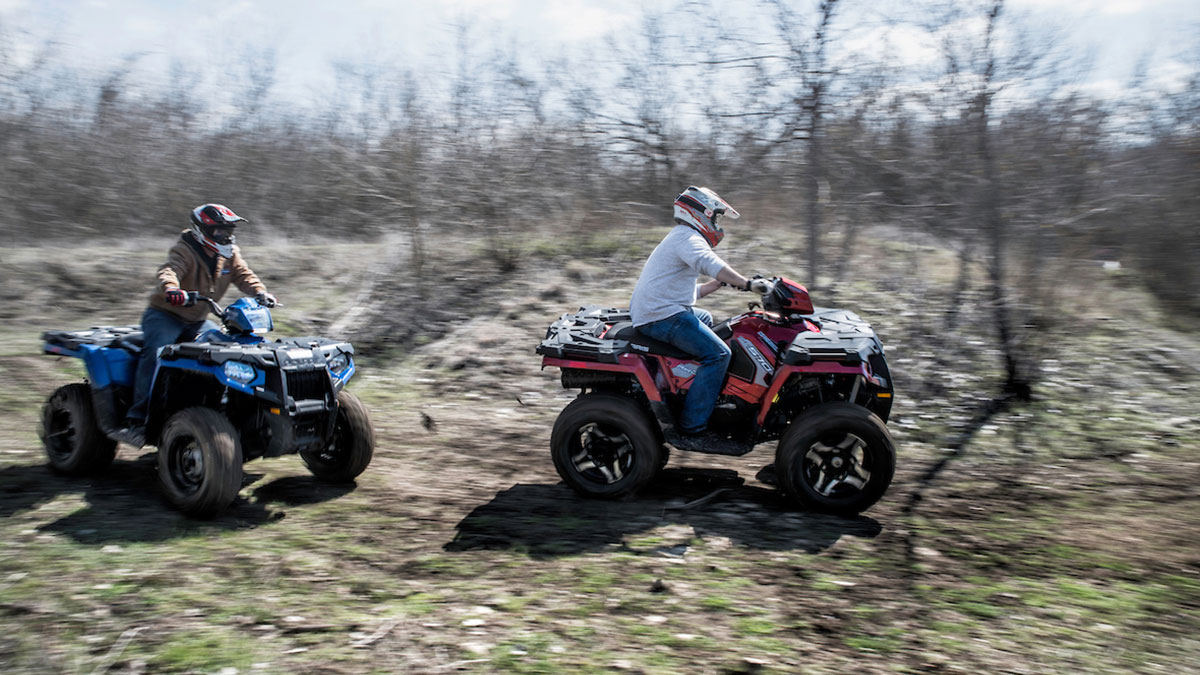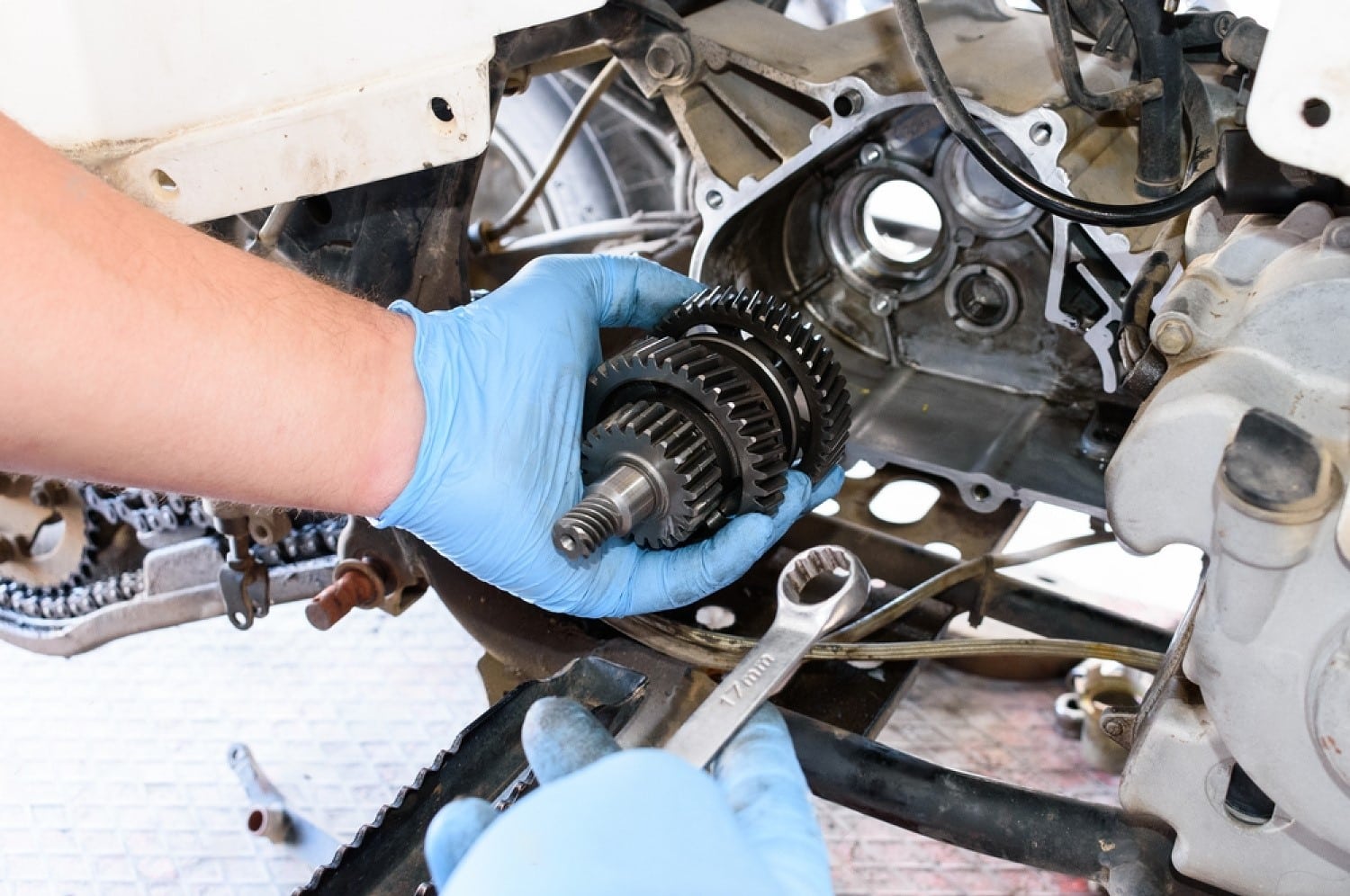ATV Proficiency: A Comprehensive Overview to Off-Road Dominance
ATV Proficiency: A Comprehensive Overview to Off-Road Dominance
Blog Article
ATV Riding Strategies: Grasping the Art of Off-Roading

Body Positioning
To properly browse through challenging off-road surface, it is vital for ATV bikers to continually keep appropriate body positioning. Maintaining the correct body placement while riding an ATV not just boosts control and security however additionally makes certain the motorcyclist's safety. By embracing the proper body positioning methods, cyclists can efficiently disperse their weight, boost their equilibrium, and reduce the danger of injuries or accidents.
One trick facet of correct body positioning is keeping the feet on the foot pegs. Placing the feet on the foot pegs enables the biker to preserve security and control over the ATV. The cyclist's knees should be somewhat bent, supplying a slight suspension to maintain and take in shocks equilibrium. Furthermore, the cyclist's top body need to remain relaxed and flexible, permitting for smooth and fast activities when essential. This consists of maintaining a light grasp on the handlebars to keep control without excessive force.
Moreover, the cyclist's eyes need to always be focused ahead, scanning the terrain and anticipating any type of barriers or adjustments in the trail. By preserving an ahead look, cyclists can make instant choices and respond properly to testing terrain.
Throttle Control
Building upon the relevance of appropriate body placing for ATV motorcyclists, mastering throttle control is a crucial skill that allows motorcyclists to effectively maneuver via numerous off-road surfaces. Throttle control describes the ability to manage the amount of power supplied to the ATV's engine. By comprehending exactly how to manipulate the throttle, motorcyclists can guarantee a regulated and smooth acceleration, allowing them to navigate barriers with accuracy.
One of the fundamental elements of throttle control is learning to regulate the throttle efficiently. Sudden or jerky activities can trigger the ATV to shed traction or become unsteady, making it tough to preserve control. Instead, riders need to go for gradual and intentional throttle inputs, specifically when going across challenging terrains. This technique allows the ATV to maintain a steady speed and gives better traction, decreasing the threat of mishaps.
In enhancement to smooth modulation, bikers need to additionally find out just how to balance the throttle with various other riding techniques, such as body positioning and stopping. For instance, when climbing steep hillsides, cyclists need to use adequate throttle to maintain momentum without subduing the ATV or creating wheel spin. In a similar way, when descending high slopes, riders ought to utilize the throttle in mix with appropriate body positioning and braking to maintain control and protect against the ATV from gliding or toppling.

Braking Techniques
An essential element of ATV riding strategies is mastering reliable braking techniques. When it comes to off-roading, understanding just how to brake properly can make a considerable distinction in your safety and security and control over the vehicle. Among one of the most essential braking methods is making use of the front brake greater than the back brake. The front brake gives most of the stopping power, so it is vital to utilize it judiciously. It is crucial to remember that severe braking with just the front brake can create the ATV to pitch forward, potentially leading to loss of control or even flipping over. It Full Article is advised to use both brakes all at once, however with even more pressure on the front brake. One more important strategy is to stay clear of securing the wheels while braking. Locking the wheels can result in skidding, making it tough to preserve control. To avoid this, press the brake levers progressively and launch them slightly if you really feel the wheels securing. By mastering these braking strategies, you can boost your ATV riding skills and guarantee a secure and delightful off-roading experience.
Cornering Methods
One important facet of mastering ATV riding strategies is comprehending effective cornering strategies. Cornering on an ATV can be tough, however with the best methods, bikers can navigate turns securely and effectively. The key to effective cornering is to keep control of the ATV while maximizing traction and reducing the risk of tipping over.
To execute a correct cornering strategy, cyclists should come close to the turn at a proper speed, guaranteeing they are not going also quick or also sluggish. It is essential to move the body weight in the direction of the within the turn, leaning right into it to maintain balance and security. This aids for the centrifugal force and keeps the ATV upright.
In addition, riders must maintain their eyes focused on the leave factor of the turn as opposed to the prompt path in advance (ATV). This enables smoother and a lot more specific steering, as it aids the biker anticipate any type of obstacles or adjustments in surface
Additionally, appropriate throttle control plays a substantial function in cornering. Bikers need to regulate the throttle smoothly, preventing unexpected velocities or slowdowns, which can create loss of control.
Uphill and Downhill Riding
When navigating off-road terrain, ATV cyclists must grasp the strategies for uphill and downhill riding to maintain control and make sure safety and security. Downhill riding, on the various other hand, calls for bikers to lean back and change their weight towards the rear of the ATV. By grasping the strategies for uphill and downhill riding, ATV motorcyclists can with confidence take on numerous off-road terrains and delight in a electrifying and safe adventure.
Final Thought
In final thought, grasping the art of ATV riding needs a mix of body positioning, throttle control, stopping strategies, and effective cornering. Uphill and downhill riding also require certain skills to navigate safely. By carrying out these strategies, cyclists can enhance their off-roading experience he has a good point and enhance their general control and safety and security on the ATV.
ATV Riding Techniques: Mastering the Art of Off-Roading is a thorough guide that delves into the ins and outs of understanding the skills required for off-road ATV riding. Whether you are a beginner or a knowledgeable cyclist, ATV Riding Techniques: Mastering the Art of Off-Roading uses essential recommendations to help raise your off-road ATV riding skills to important source the next level.

Report this page